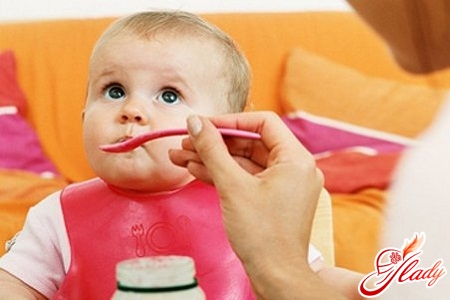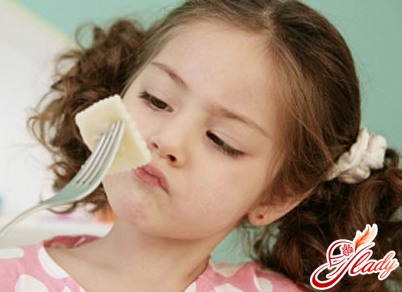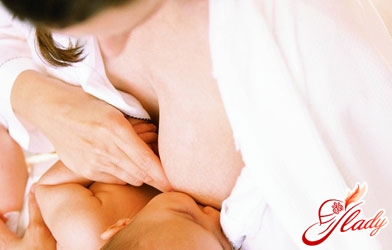 Dysbacteriosis.Everyone has heard about it, a lot is written about it and young parents are often frightened by it. Young mothers anxiously peer into the contents of diapers, getting scared at the slightest change in the consistency of feces. Often, parents mistake the slightest digestive disorder of a child for dysbacteriosis and begin to treat the baby themselves with all available means. Often, such treatment brings an absolutely opposite result, only worsening the child's condition. And the treatment of dysbacteriosis in children is possible only if the causes of the disease and the characteristics of the course are absolutely reliably known. However, only a few have a good idea of what dysbacteriosis in infants actually is, what are the causes of its occurrence and methods of treatment. This article was written specifically for young parents, which provides the most complete description of such a disease as intestinal dysbacteriosis. Doctors give the following definition of the disease dysbacteriosis. Dysbacteriosis is any disturbance of the normal balance of intestinal microflora, in which the natural ratio of pathogenic and beneficial microflora is disrupted, resulting in a failure in the normal functioning of the intestine.
Dysbacteriosis.Everyone has heard about it, a lot is written about it and young parents are often frightened by it. Young mothers anxiously peer into the contents of diapers, getting scared at the slightest change in the consistency of feces. Often, parents mistake the slightest digestive disorder of a child for dysbacteriosis and begin to treat the baby themselves with all available means. Often, such treatment brings an absolutely opposite result, only worsening the child's condition. And the treatment of dysbacteriosis in children is possible only if the causes of the disease and the characteristics of the course are absolutely reliably known. However, only a few have a good idea of what dysbacteriosis in infants actually is, what are the causes of its occurrence and methods of treatment. This article was written specifically for young parents, which provides the most complete description of such a disease as intestinal dysbacteriosis. Doctors give the following definition of the disease dysbacteriosis. Dysbacteriosis is any disturbance of the normal balance of intestinal microflora, in which the natural ratio of pathogenic and beneficial microflora is disrupted, resulting in a failure in the normal functioning of the intestine.
Dysbacteriosis in infants
A newborn baby from a sterile environmentmother's body enters the environment of the surrounding world, which is densely populated by a variety of microorganisms. Of course, in such conditions, the child's body simply cannot remain as sterile as it was in the womb. Almost from the moment of birth, the baby's body begins to be populated by microorganisms, both beneficial and pathogenic. Strictly speaking, the process of colonization of the child's intestines by microorganisms begins during childbirth, at the moment when the baby makes its way along the mother's birth canal. And after the baby begins to eat independently, its intestines will become a habitat for a variety of microorganisms. Microorganisms in the baby's intestines begin to multiply very actively. In a healthy baby, for every three grams of feces there is one gram of bacteria. Such coexistence of microorganisms and humans is beneficial to both parties and is called symbiosis. Microorganisms that live in the human intestines are divided into two subspecies:
- Obligatnaya flora
Microorganisms of this group are simply vitalare necessary for the normal functioning of the intestinal tract. These microorganisms are necessary for the digestion process, for the full functioning of the child's immune system. These microorganisms include E. coli, lactobacilli and bifidobacteria. Bacteria - saprophytes, which do not have either a positive or negative effect on human health, also belong to the obligate flora. This group is the most extensive and makes up approximately 96% of the entire intestinal microflora.
- Facultative microflora
Microorganisms of this group in the intestineare present in small quantities, and under unfavorable conditions, for example, with decreased immunity, injuries, stress, unhealthy diet, they begin to actively multiply. And after reaching a critical point, this pathogenic microflora often leads to the emergence of various intestinal infections. Conditionally pathogenic microflora includes such microorganisms as Proteus, staphylococci, Candida fungi. And if the presence of this microflora in an adult does not always lead to the occurrence of a disease, then in infants, whose immune system is not yet fully functioning, it always does. I would like to talk in more detail about such especially beneficial bacteria as bifidobacteria and lactobacilli. Their presence in the child's body, as mentioned above, is simply necessary. If there are enough of these microorganisms in the intestines, they will simply displace all pathogenic microflora. This happens due to the fact that the waste products of these bacteria create an environment in which the existence of pathogenic microflora is simply impossible. The second, no less important function of beneficial microflora is maintaining the normal functioning of the immune system. The presence of bifido and lactobacilli stimulates the production of immunoglobulins, which protect the child from the penetration of various pathogenic microorganisms into the body. It is not for nothing that when the balance of microflora is disturbed, the child often experiences a significant weakening of the immune system. Lactobacilli and bifidobacteria are responsible for the production of vitamins in the intestines such as:
- Folic acid
- Vitamin B6
- Vitamin B12
These vitamins are essential for normal development.the child and the functioning of his immune system. And, in addition, these microorganisms are responsible for the complete absorption of iron, calcium and vitamin D. Another very important function of bacteria is to stimulate intestinal peristalsis. Normal peristalsis helps to avoid various problems with constipation in the baby. Knowing all this, it becomes absolutely obvious why it is so important to have the right ratio of bacteria in the baby's intestines. If it is disturbed, there is a risk of developing hypovitaminosis, rickets and iron deficiency anemia. In addition, the risk of developing intestinal infections increases significantly.
The process of formation of microflora
As mentioned earlier, the baby is born withабсолютно стерильным кишечником. Заселение кишечника микрофлорой начинается во время родов. Сразу же после рождения, прямо в родовом зале, происходит первый контакт крохи с окружающим миром, а его организм в этот момент продолжает заселяться микроорганизмами. После минимальной обработки врачи выкладывают кроху на живот к маме. Малыш получает очередную порцию микрофлоры, которую отдает кожа, тем самым предотвращая первичное заселение кожи ребенка чужеродной микрофлорой. Далее происходит, наверное, самое главное событие в жизни каждого малыша, первое прикладывание к груди. После того, как кроха погружает в ротик материнский сосок и делает первые глотки такого ценного молозива. В этот момент происходит закладка первого камня фундамента здоровья крохи. Помимо того, что в молозиве находится огромное количество самых различных полезных веществ, которые необходимы для малыша, оно содержит факторы, влияющие на становление естественной нормальной микрофлоры кишечника. Молозиво очень богато бифидогенными компонентами, которые стимулируют развитие и рост бифидобактерий. Молозиво попадает в кишечник новорожденного ребенка впервые два часа его жизни. Попав в детский организм, эти вещества создают благоприятные условия для жизни бифидо и лактобактерий, которые, попав в кишечник, создают благоприятную среду для питания бифидобактерий. Кроме того, в молозиве содержится огромное количество иммуноглобулинов, которые являются своеобразной биологической прививкой от огромного количества заболеваний. Именно поэтому детишки, которых приложили к груди в первые два часа жизни, растут более здоровыми и крепкими, чем их сверстники, которые по каким – либо причинам были с самого рождения отлучены от материнской груди. У таких детей намного реже возникают случаи развития дисбактериоза, у них намного быстрее формируется благоприятная микрофлора, они гармонично развиваются и набирают свой вес. После первого прикладывания к груди, на протяжении следующих трех – пяти дней, кишечник малыша подвергается инфицированию различными микроорганизмами кишечника. И среди микроорганизмов, попадающих в кишечник, достаточно большое количество условно патогенной и патогенной микрофлоры. Именно поэтому зачастую в течение первой недели жизни малыша у него развивается так называемый транзитный дисбактериоз, который характеризуется появлением водянистого стула с прожилками слизи и зелени, а кроме того, спастическими болями в животике и срыгиванием. Но уже примерно к концу первой недели у малыша начинается следующая фаза заселения кишечника микроорганизмами. К этому времени бифидо и лактобактерии, полученные малышом в первые часы жизни, размножаются в достаточно большом количестве и начинают вытеснять патогенную микрофлору. Признаки нарушения микрофлоры постепенно исчезают, стул ребенка нормализуется, срыгивания значительно уменьшаются до значений физиологической возрастной нормы. Лечение дисбактериоза у грудных детей проводится достаточно успешно. Сам по себе транзитный дисбактериоз не является заболеванием, при том условии, что его появление не сопровождалось такими осложнениями, как глубокая недоношенность, прием антибиотиков и наличие инфекционных заболеваний. Но для того, чтобы эта фаза благополучно миновала, должен быть соблюден ряд определенных требований:
- As early as possible applying to the breast, preferably within the first two hours after the birth of the crumbs.
- Breastfeeding on demand throughout this time. The question is, what to feed the child with dysbiosis should not even be discussed - if the mother has milk - then only breastfeed.
- Joint stay of mother and baby.
If these simple rules are violated, sharpthe chances of developing primary dysbacteriosis will increase and, as a consequence, disruption of the normal process of digestion and stool. The baby's already immature immune system will deteriorate, and food allergies may occur. Signs of dysbacteriosis in children will not take long to appear.
Symptoms of dysbiosis
The behavior of a baby suffering from dysbacteriosis,changes significantly. If the baby's normal qualitative and quantitative composition of microflora is disrupted, the baby experiences some discomfort. Dysbacteriosis symptoms in children are precise and pronounced. The baby experiences increased gas formation and intestinal colic, as a result of which the baby is restless, cries, and kicks his legs. His usual sleep and wakefulness patterns are disrupted. As a rule, such attacks of intestinal colic occur one and a half to two hours after feeding the baby. As a rule, the baby's tummy swells, there is a rumbling sound along the intestines. As a result of these phenomena, the baby regurgitates and even vomits. If dysbacteriosis in the baby is in a pronounced form, such a phenomenon as malabsorption may occur. As a result, there is a violation of the absorption of nutrients in the small intestine, the baby has diarrhea - the child's stool is foamy and has a sharp putrid odor. In addition, the baby not only does not gain weight, but often loses it. And as already mentioned above, the baby suffers from severe dysbacteriosis if something is wrong in his body - either the baby was born prematurely, or underwent a course of antibiotics. And malabsorption significantly worsens the general health of the baby and the course of the underlying disease, if any. After a certain time, the baby's diarrhea can change to persistent constipation. This happens because the baby's intestines have a significantly reduced content of bifidobacteria, which are responsible for proper intestinal peristalsis, which is simply necessary for normal bowel movements of the child.
Types of dysbiosis
Depending on the causes of dysbacteriosis in children, it is divided into two subtypes:
- Compensated dysbiosis
If the baby suffers from compensateddysbacteriosis, no external manifestations of dysbacteriosis are observed. The baby's health is quite satisfactory, there are no digestive or stool disorders. And the very fact of the presence of dysbacteriosis is revealed, as a rule, absolutely by accident, during a stool analysis. Moreover, almost always the reason for this analysis is either another disease or a simple preventive examination. Analysis for dysbacteriosis in children is done purposefully extremely rarely.
- Uncompensated dysbiosis
And here is an uncompensated type of dysbacteriosiscauses a huge number of problems with the baby's health. All the above-described signs of dysbacteriosis are present and the question of treating the baby is simply not worth it. Treatment must be started immediately, without allowing the condition to worsen further. After all, the more advanced the dysbacteriosis, the more difficult it is to treat, and the more the baby's body suffers. Drugs for dysbacteriosis for children begin to have a positive effect on the baby's body quite quickly. In the first case, with a compensated type of dysbacteriosis, in the absence of complaints and good weight gain, parents often refuse to treat dysbacteriosis, believing that there is no reason to worry. However, it is possible to ignore such dysbacteriosis only in older children. In very small children, dysbacteriosis should be treated in any case, no matter what type it is - compensated or uncompensated. In small babies, the concept of compensation is very fickle - today compensation is sufficient, and tomorrow dysbacteriosis will become uncompensated, occurring in a very severe form. This is why the baby needs proper treatment.
Treatment of dysbiosis
After the parents' concernsare confirmed, they have a logical question: how to treat dysbacteriosis in children? No matter how trite it may sound, the best treatment for dysbacteriosis is proper and long-term breastfeeding of the baby. Any baby needs mother's milk at least during the first year of life. And there is no need to talk about babies suffering from intestinal dysbacteriosis. Dysbacteriosis in children under one year is successfully treated with breastfeeding. It has already been said that colostrum contains a huge number of substances that contribute to the normal formation of microflora. But mature mother's milk is no less useful for the intestinal flora of the child. It creates an optimal environment for the growth and development of these bacteria, and also helps to maintain the necessary balance between lacto bacteria, E. coli and bifidobacteria, thereby ensuring not only proper digestion, but also the prevention of allergic reactions. If for some reason you cannot breastfeed your baby, you need to be especially careful when choosing a formula for artificial feeding of the baby. The formula for such a child should contain additional protective factors. Such formulas include all fermented milk formulas, as well as dry formulas containing prebiotics. Prebiotics are substances that create favorable conditions for bifido and lactobacilli. Remember that when choosing a therapeutic formula, it is imperative to first consult with your pediatrician. Before drug treatment of dysbacteriosis, it is imperative to conduct a study of the child's feces for an accurate diagnosis of the disease and the exclusion of intestinal infections. After receiving a laboratory test result confirming the presence of dysbacteriosis in the baby, you can proceed directly to treatment. The treatment of dysbacteriosis itself consists of two stages. At the first stage, it is necessary to achieve complete suppression of the reproduction and growth of pathological microflora. For these purposes, doctors prescribe the baby to take special drugs called bacteriophages. These immunopreparations absorb and remove all pathogenic microflora from the child's body. In particularly severe cases, when bacteriophages fail, doctors are forced to resort to intestinal antiseptics and even antibiotics. In this case, antibiotics are used that have an effect only on the intestinal lumen, without entering the blood. The second stage of dysbacteriosis treatment should be the colonization of the intestine with the necessary microflora and the creation of favorable conditions for its growth and development. For this, probiotics are used - pharmacological drugs containing live bifido and lactobacilli, as well as E. coli. It is impossible to unambiguously recommend any specific drug - treatment should be prescribed only by a doctor and in each specific case - individually.
Prevention of dysbiosis
Of course, it makes much more sense to tryprevent the development of dysbacteriosis than to treat it later. This should be done as early as possible, even before pregnancy. Before pregnancy, the mother should undergo a full examination to identify and eliminate the violation of the microflora of the genital tract. In the same case, if the presence of candidiasis is detected during pregnancy, it is necessary to immediately begin treatment. Modern pharmacology offers a large number of drugs that can be used during pregnancy. In addition, the expectant mother should very carefully monitor her health, avoiding the possibility of infection with various diseases, the treatment of which is carried out with antibiotics. It is also very important to choose in advance the maternity hospital in which early attachment of the baby to the breast and subsequent joint stay of the mother and baby are practiced. Why this is so important has already been written above. And in addition, such joint stay allows for a closer emotional contact between the mother and baby.
Dysbacteriosis in older children
Many parents mistakenly assume thatthe problem of dysbacteriosis disappears after three years. However, this is not true at all - both babies and schoolchildren suffer from dysbacteriosis equally often. However, schoolchildren are often simply embarrassed to admit to their parents about the existence of a problem with the stool. Intestinal dysbacteriosis symptoms in older children are quite blurred and not always clearly expressed. There are many reasons that cause dysbacteriosis in older children. Such a reason can be a significant deterioration in the functioning of the child's immune system. As a rule, this happens if a virus enters the child's body, the immune system is triggered, which begins to destroy a foreign pathogenic microorganism. And if for some reason the child's immune system is weakened, pathogenic microorganisms begin to multiply unhindered, disrupting the normal intestinal microflora. The second, very common reason for the occurrence of dysbacteriosis is prolonged treatment of the child with antibiotics. As a rule, standard generally accepted courses of antibiotics do not cause the development of dysbacteriosis in a child. And if it does develop, it quickly goes away on its own when the intestines are repopulated with beneficial bacteria after the end of treatment. But if the disease was serious enough and doctors had to resort to strong antibiotics, and the course of treatment was long enough, severe dysbacteriosis is almost inevitable. Dysbacteriosis in children after antibiotics is treated quite effectively. The third reason for the development of dysbacteriosis is the formation of such a negative environment in the child's intestines, in which the existence of normal microflora becomes almost impossible. Some bacteria die, some continue to multiply - as a result, an imbalance of the intestinal microflora occurs. This condition can be caused by a child's intolerance to certain food components due to the lack of certain enzymes in the body. For example, milk intolerance - lactose deficiency - is very common. Some people cannot tolerate casein, animal protein, legumes.
Symptoms of dysbiosis in older children
If the baby is breastfed, parents and doctors mayobserve a number of specific signs of dysbacteriosis, then in older children there are practically no clear symptoms of the disease. However, there are still a number of complaints by which one can suspect the presence of dysbacteriosis in a child:
- Constant or recurring nausea, eructation.
- Constant heartburn is also often associated with the presence of a child's dysbiosis.
- Pain in the stomach, smack or smell from the mouth.
- The occurrence of allergic reactions to those products that the child used to eat without any problems. Allergy and dysbacteriosis in children almost always go hand in hand.
Most of all, if the child has dysbacteriosisthe digestion process suffers. Any food that enters the human intestine is broken down by bacteria. And only after that, the broken down food begins to be absorbed into the blood. And if the natural balance of microflora is disturbed, the body rejects most of the food as foreign substances. That is why the child begins to vomit and have diarrhea.
Treatment of dysbiosis in older children
If parents suspect that their child hasdysbacteriosis, they need to see a doctor as soon as possible. The doctor must find out which bacteria are lacking in the child's body, and which, on the contrary, are in excess. Two methods are used for diagnosis:
- Bacteriological examination of feces
The essence of this study is as follows:samples of the child's feces are placed in a certain favorable environment, in which the existing bacteria begin to actively grow and multiply. As a result, after seven days it will be possible to determine the approximate composition of the child's intestinal microflora. The only disadvantage of this research method is that it can only detect 60% of all existing types of bacteria. In addition, to obtain reliable results, it is very important to carefully follow all the requirements for conducting such studies.
- Examination of metabolites of microflora
The essence of this research method is thatthat determines the content of volatile fatty acids, which are the result of the vital activity of various types of bacteria. Results can be obtained in a few hours. Treatment of dysbacteriosis. The principle of treating dysbacteriosis in older children is slightly different from that in infants. In schoolchildren, dysbacteriosis is accompanied by impaired intestinal motility, irritable bowel, and even psychoemotional disorders. That is why the treatment of dysbacteriosis in most cases should be comprehensive. Only a doctor can decide how to cure dysbacteriosis in a child. The main principles of treating dysbacteriosis are as follows:
- A sick child must follow a strict diet. Nutrition for dysbacteriosis in children should contain a large number of different sour-milk products, as well as foods rich in fiber and proteins. Nutrition must be regular and systematic. Diet for children with dysbiosis is simply a prerequisite for successful treatment.
- In addition, it is extremely important to establish a normal intestinal peristalsis. A proper diet and certain pharmacological drugs prescribed by a doctor will successfully cope with this task.
- Restoration of normal intestinal microflora. To do this, use a large number of a variety of drugs, depending on what kind of bacteria is not enough in the body of the child.
- Treatment of co-morbidities, if any.
Prevention of dysbacteriosis in children is moreof older age should consist of maintaining a properly balanced diet and a healthy lifestyle. If a course of antibiotic treatment is planned for the child, parents should consult a doctor in advance about the preventive use of probiotics. This will help reduce the manifestation of dysbacteriosis in children receiving antibacterial therapy. Often in various sources you can find information about such a phenomenon as the treatment of dysbacteriosis with herbs in children. However, doctors categorically do not advise self-medication. Firstly, a lot of time can be lost and dysbacteriosis will take an advanced form. And secondly, children often have severe allergic reactions to various herbs. Remember that intestinal dysbacteriosis is not such a harmless disease as it may seem at first glance. Untimely treatment can lead to the development of quite severe complications, the echoes of which the child will feel throughout his life. We advise you to read:









